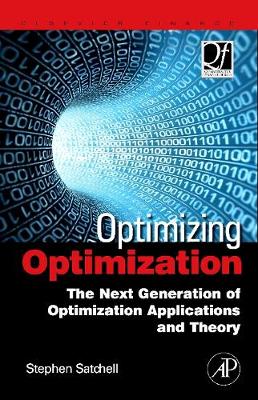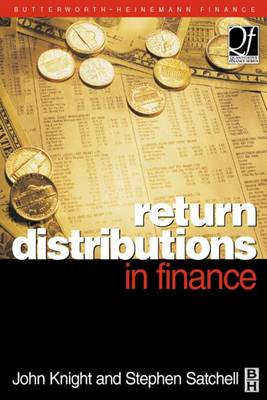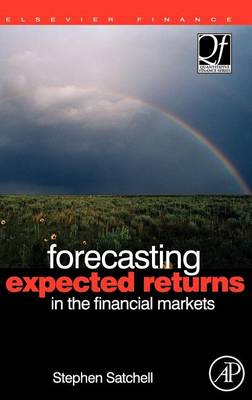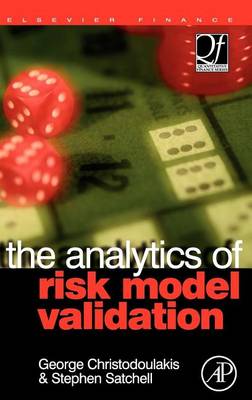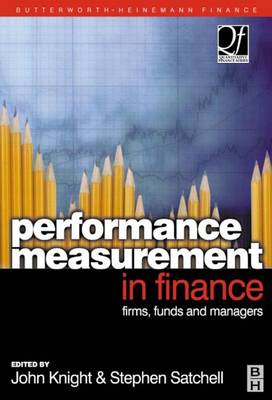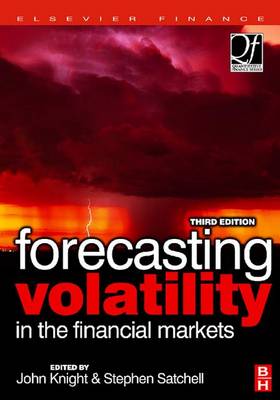Quantitative Finance
8 total works
Return Distributions in Finance
by Emeritus Professor of Economics and Fellow of St Edmund Hall John Knight and Stephen Satchell
One of the original contributions in this area is the classic by Cootner entitled 'The Random Nature of Stock Market Prices'. This work investigated the statistical properties of asset prices and was one of the first works to investigate this area in a rigorous manner.
Much has happened in this field in the last 35 years and 'Return Distributions in Finance' contains much new information that reflects this huge growth.
The authors combined experience reflects not only the new theory but also the new practice in this fascinating area. The rise of financial engineering now allows us to change the nature of asset returns to whatever pattern we desire, albeit at a cost. Benefits and costs can only be understood if we understand the underlying processes. 'Return Distributions in Finance' allows us to gain that understanding.
'Downside Risk in Financial Markets' demonstrates how downside-risk can produce better results in performance measurement and asset allocation than variance modelling. Theory, as well as the practical issues involved in its implementation, is covered and the arguments put forward emphatically show the superiority of downside risk models to variance models in terms of risk measurement and decision making. Variance considers all uncertainty to be risky. Downside-risk only considers returns below that needed to accomplish the investor's goal, to be risky.
Risk is one of the biggest issues facing the financial markets today. 'Downside Risk in Financial Markets' outlines the major issues for Investment Managers and focuses on "downside-risk" as a key activity in managing risk in investment/portfolio management. Managing risk is now THE paramount topic within the financial sector and recurring losses through the 1990s has shocked financial institutions into placing much greater emphasis on risk management and control.
Free Software Enclosed
To help you implement the knowledge you will gain from reading this book, a CD is enclosed that contains free software programs that were previously only available to institutional investors under special licensing agreement to The pension Research Institute. This is our contribution to the advancement of professionalism in portfolio management.
The Forsey-Sortino model is an executable program that:
1. Runs on any PC without the need of any additional software.
2. Uses the bootstrap procedure developed by Dr. Bradley Effron at Stanford University to uncover what could have happened, instead of relying only on what did happen in the past. This is the best procedure we know of for describing the nature of uncertainty in financial markets.
3. Fits a three parameter lognormal distribution to the bootstrapped data to allow downside risk to be calculated from a continuous distribution. This improves the efficacy of the downside risk estimates.
4. Calculates upside potential and downside risk from monthly returns on any portfolio manager.
5. Calculates upside potential and downside risk from any user defined distribution.
Forsey-Sortino Source Code:
1. The source code, written in Visual Basic 5.0, is provided for institutional investors who want to add these calculations to their existing financial services.
2. No royalties are required for this source code, providing institutions inform clients of the source of these calculations. A growing number of services are now calculating downside risk in a manner that we are not comfortable with. Therefore, we want investors to know when downside risk and upside potential are calculated in accordance with the methodology described in this book.
Riddles Spreadsheet:
1. Neil Riddles, former Senior Vice President and Director of Performance Analysis at Templeton Global Advisors, now COO at Hansberger Global Advisors Inc., offers a free spreadsheet in excel format.
2. The spreadsheet calculates downside risk and upside potential relative to the returns on an index
Analytics of Risk Model Validation
by George A Christodoulakis and Stephen Satchell
Performance Measurement in Finance
by Emeritus Professor of Economics and Fellow of St Edmund Hall John Knight
The topics covered include evaluation of investment fund management, evaluation of the investment fund itself, and stock selection performance. The book also surveys and critiques existing methodologies of performance measurement and covers new innovative approaches to performance measurement. The contributors to the text include both academics and practitioners providing comprehensive coverage of the topic areas.
Performance Measurement in Finance is all about how to effectively measure financial performance of the fund manager and investment house managers, what measures need to be put in place and technically what works and what doesn't. It covers risk, and what's acceptable and what isn't, how, in short, to manage risk.
Forecasting Volatility in the Financial Markets
by Emeritus John Knight and Stephen Satchell
Chapters new to this third edition:
* What good is a volatility model? Engle and Patton
* Applications for portfolio variety Dan diBartolomeo
* A comparison of the properties of realized variance for the FTSE 100 and FTSE 250 equity indices Rob Cornish
* Volatility modeling and forecasting in finance Xiao and Aydemir
* An investigation of the relative performance of GARCH models versus simple rules in forecasting volatility Thomas A. Silvey
